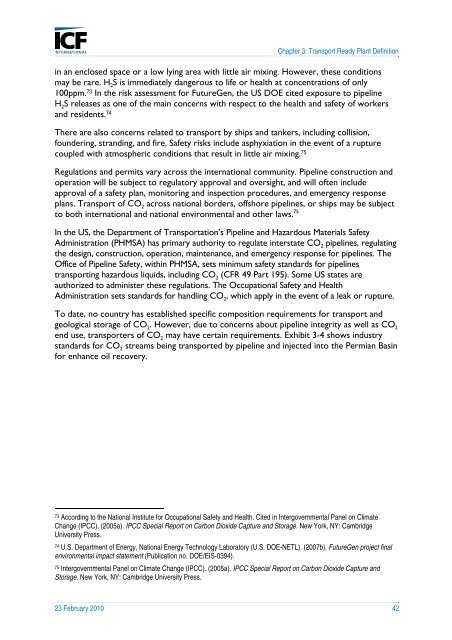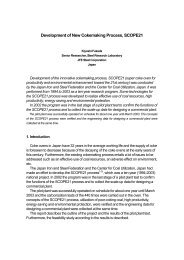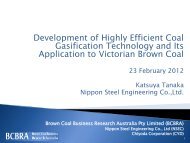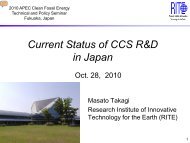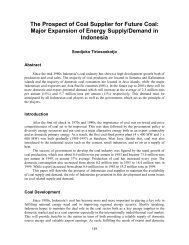Defining CCS Ready: An Approach to An International Definition
Defining CCS Ready: An Approach to An International Definition
Defining CCS Ready: An Approach to An International Definition
- No tags were found...
You also want an ePaper? Increase the reach of your titles
YUMPU automatically turns print PDFs into web optimized ePapers that Google loves.
Chapter 3: Transport <strong>Ready</strong> Plant <strong>Definition</strong>in an enclosed space or a low lying area with little air mixing. However, these conditionsmay be rare. H 2 S is immediately dangerous <strong>to</strong> life or health at concentrations of only100ppm. 73 In the risk assessment for FutureGen, the US DOE cited exposure <strong>to</strong> pipelineH 2 S releases as one of the main concerns with respect <strong>to</strong> the health and safety of workersand residents. 74There are also concerns related <strong>to</strong> transport by ships and tankers, including collision,foundering, stranding, and fire. Safety risks include asphyxiation in the event of a rupturecoupled with atmospheric conditions that result in little air mixing. 75Regulations and permits vary across the international community. Pipeline construction andoperation will be subject <strong>to</strong> regula<strong>to</strong>ry approval and oversight, and will often includeapproval of a safety plan, moni<strong>to</strong>ring and inspection procedures, and emergency responseplans. Transport of CO 2 across national borders, offshore pipelines, or ships may be subject<strong>to</strong> both international and national environmental and other laws. 75In the US, the Department of Transportation’s Pipeline and Hazardous Materials SafetyAdministration (PHMSA) has primary authority <strong>to</strong> regulate interstate CO 2 pipelines, regulatingthe design, construction, operation, maintenance, and emergency response for pipelines. TheOffice of Pipeline Safety, within PHMSA, sets minimum safety standards for pipelinestransporting hazardous liquids, including CO 2 (CFR 49 Part 195). Some US states areauthorized <strong>to</strong> administer these regulations. The Occupational Safety and HealthAdministration sets standards for handling CO 2 , which apply in the event of a leak or rupture.To date, no country has established specific composition requirements for transport andgeological s<strong>to</strong>rage of CO 2 . However, due <strong>to</strong> concerns about pipeline integrity as well as CO 2end use, transporters of CO 2 may have certain requirements. Exhibit 3-4 shows industrystandards for CO 2 streams being transported by pipeline and injected in<strong>to</strong> the Permian Basinfor enhance oil recovery.73 According <strong>to</strong> the National Institute for Occupational Safety and Health. Cited in Intergovernmental Panel on ClimateChange (IPCC). (2005a). IPCC Special Report on Carbon Dioxide Capture and S<strong>to</strong>rage. New York, NY: CambridgeUniversity Press.74 U.S. Department of Energy, National Energy Technology Labora<strong>to</strong>ry (U.S. DOE-NETL). (2007b). FutureGen project finalenvironmental impact statement (Publication no. DOE/EIS-0394).75 Intergovernmental Panel on Climate Change (IPCC). (2005a). IPCC Special Report on Carbon Dioxide Capture andS<strong>to</strong>rage. New York, NY: Cambridge University Press.23 February 2010 42


